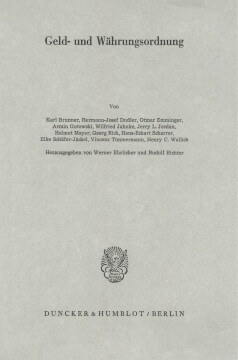Geld- und Währungsordnung

BOOK
Cite BOOK
Style
Format
Geld- und Währungsordnung
Editors: Ehrlicher, Werner | Richter, Rudolf
Schriften des Vereins für Socialpolitik, Vol. 138
(1983)

BOOK
Editors: Ehrlicher, Werner | Richter, Rudolf
Schriften des Vereins für Socialpolitik, Vol. 138
(1983)